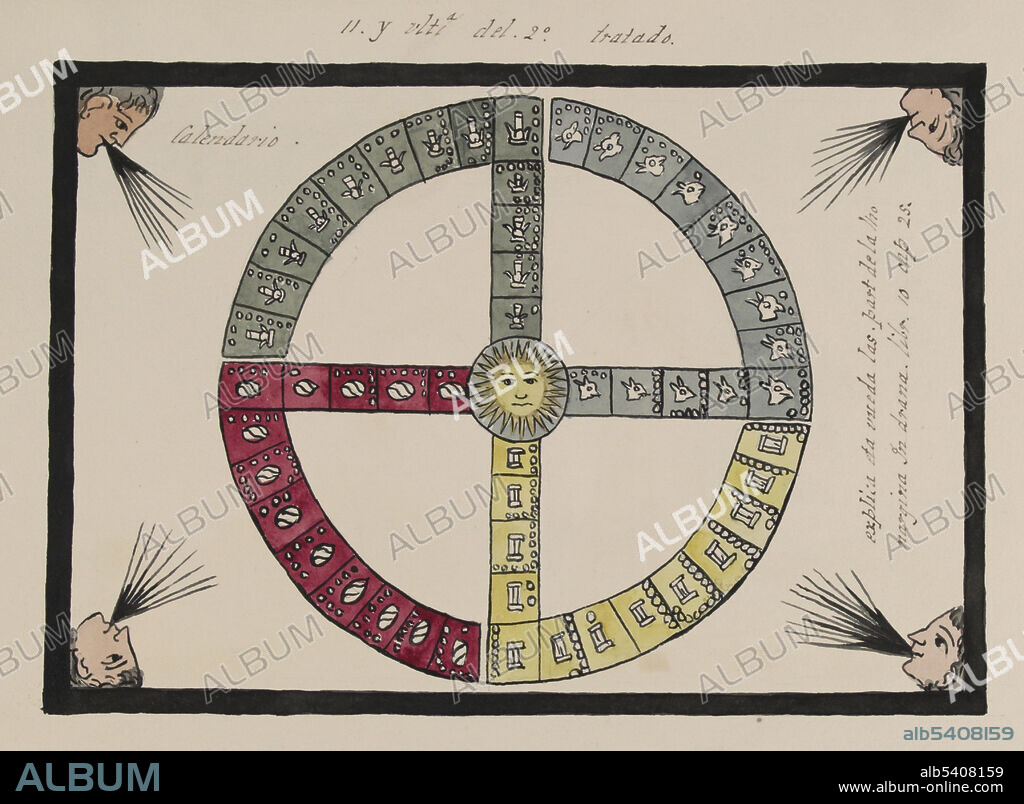alb5408159
Tovar Codex, Aztec Tonalpohualli Calendar

|
Zu einem anderen Lightbox hinzufügen |
|
Zu einem anderen Lightbox hinzufügen |



Haben Sie bereits ein Konto? Anmelden
Sie haben kein Konto? Registrieren
Dieses Bild kaufen
|
?
Persönliche Ausdrucke, Karten und Geschenke oder Referenz für Künstler. Nicht für werbliche Nutzung. Nicht zum Weiterverkauf bestimmt.
|
$19.99 |
|
?
|
$19.99 |
|
?
|
$49.99 |
|
?
|
$69.99 |
|
?
|
$199.99 |
In den Warenkorb legen
Für andere Zwecke
Titel:
Tovar Codex, Aztec Tonalpohualli Calendar
Untertitel:
Siehe automatische Übersetzung
Aztec Tonalpohualli calendar with a sun at the center of the wheel. The Aztecs used two calendars to compute the days of the year. Xiuhpohualli (the first, or solar, calendar) consisted of 365 days, divided into 18 months of 20 units each, plus an additional period of five empty or unlucky days at the end of the year. Tonalpohualli (day count calendar) had a cycle made up of 260 days, combinations of 13 numbers and 20 symbols. The second calendar was divided into four sections: the acatl (reed), the tochtli (rabbit), the calli (house), and the tecpatl (flint). The acatl section of the calendar wheel is green, the color of the paradise of Tamoanchan, and represents the east. The tochtli section is blue and represents the south. The calli section is in white (here the artist has used yellow) and represents the west. The tecpatl section is the color of sacrifice or red and represents the north. The Tovar Codex (16th century) contains detailed information about the rites and ceremonies of the Aztecs. The codex is illustrated with 51 full-page paintings in watercolor. Illustration taken from a 19th century transcript of Juan de Tovar's Historia de la benida de los yndios apoblar a Mexico (the Co´dice Tovar).
Persönlichkeiten:
Bildnachweis:
Album / Science Source / LOC/Jay I. Kislak Collection
Freigaben (Releases):
Model: Nein - Eigentum: Nein
Rechtefragen?
Rechtefragen?
Bildgröße:
4350 x 3192 px | 39.7 MB
Druckgröße:
36.8 x 27.0 cm | 14.5 x 10.6 in (300 dpi)
Schlüsselwörter:
 Pinterest
Pinterest Twitter
Twitter Facebook
Facebook Link kopieren
Link kopieren Email
Email
